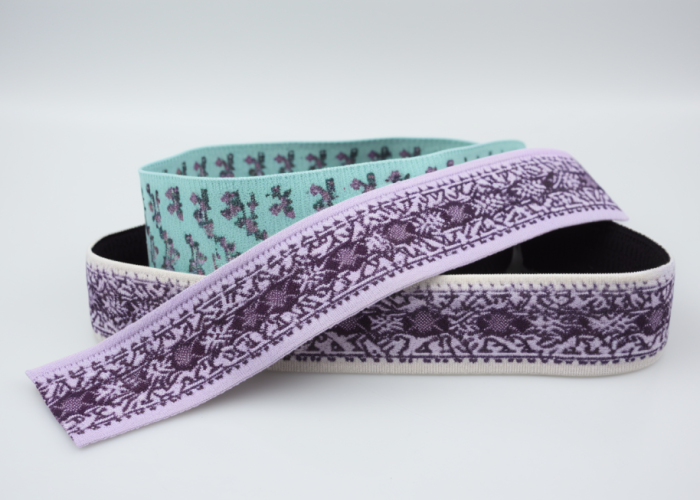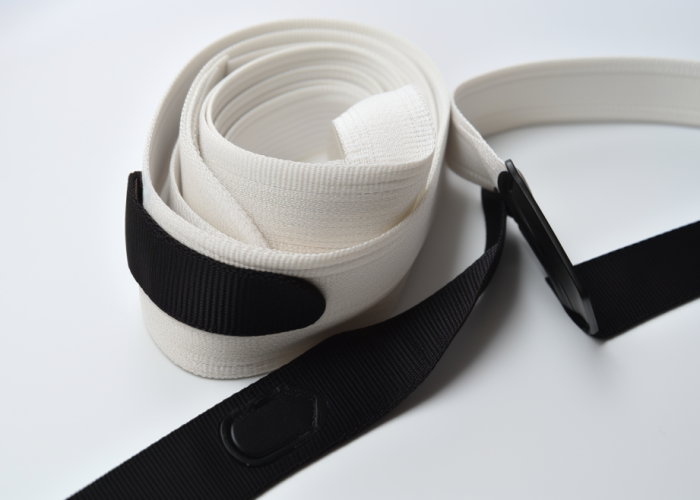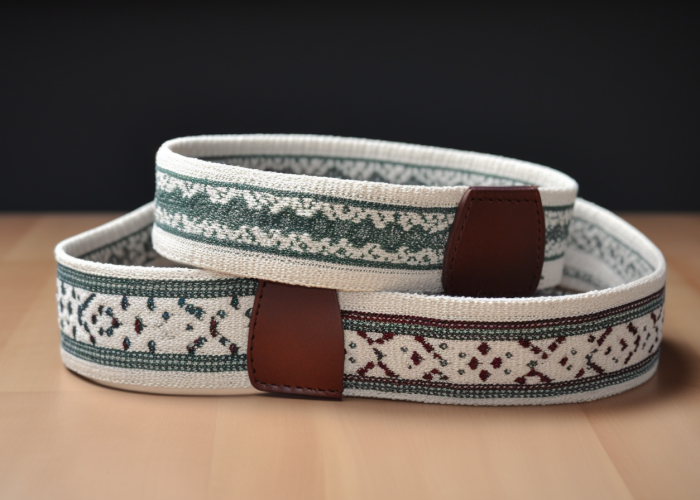Controlling elastic webbing properties requires deep technical knowledge and precision manufacturing techniques. As experienced webbing manufacturers with extensive testing capabilities, we understand how critical it is to achieve the exact elasticity requirements for your specific application.
Elastic webbing properties can be controlled through six primary factors: material selection, weave construction, elastic component choice, manufacturing processes, design parameters, and finishing treatments. By strategically manipulating these elements, manufacturers can produce webbing with precise stretch percentages, recovery rates, and durability profiles tailored to specific industry applications.
Explore key factors for selecting elastic webbing, with actionable insights for engineers and product developers to achieve optimal performance, quality, and cost-efficiency.


Webbing manufacturing expert with 15+ years of experience helping product developers build high-performance straps for industrial, medical, and outdoor use.
The best materials for elastic webbing are synthetic fibers like polyester and nylon for durability, natural fibers like cotton for comfort, and blended compositions for optimized performance. Synthetic materials provide consistent stretch properties and longer lifespan, while natural fibers offer superior breathability. High-grade materials ensure manufacturing consistency and reliable elasticity for critical applications.
The composition of the base material significantly affects the webbing’s elasticity and recovery properties. Natural fibers typically offer excellent comfort against skin and breathability but provide limited durability under repeated stretching. This makes them suitable for applications where comfort is prioritized over longevity or consistent performance.
Synthetic fibers, by contrast, deliver superior tensile strength and consistent stretch characteristics. Polyester fibers resist moisture absorption, making them ideal for applications exposed to various environmental conditions. Nylon offers exceptional strength-to-weight ratio and abrasion resistance, which extends the webbing’s functional lifespan under heavy use conditions.
Blended fiber compositions create a foundation that balances multiple performance requirements. By combining different fiber types, manufacturers can develop elastic webbing with customized properties that would be impossible to achieve with a single material type. The percentage ratio of each fiber type directly influences the final product’s elasticity, recovery rate, and durability profile.
Material grade impacts overall elastic performance significantly. Higher-grade materials maintain consistent properties and performance standards, while economic grades may exhibit greater variability in stretch characteristics. For critical applications requiring precise elasticity, selecting premium-grade materials ensures manufacturing consistency and reliable product performance.
Different weave patterns affect elastic webbing stretch by controlling tension distribution and fiber interaction. Tight weaves restrict stretch to 15-25%, while looser constructions allow 30-40% elongation. Warp-oriented elastic components create lengthwise stretch, weft-oriented components produce widthwise stretch, and combined arrangements deliver bidirectional flexibility for applications requiring multidimensional movement.
Weave density plays a crucial role in determining elastic performance. Dense weaves with minimal space between fibers create more restricted stretch patterns with greater recovery power. Conversely, more open weave constructions allow for increased elongation but may sacrifice some recovery performance after repeated stretching cycles.
The specific arrangement of elastic components within the webbing structure fundamentally alters performance characteristics. When elastic fibers run along the length (warp direction), the webbing primarily stretches longitudinally. When positioned across the width (weft direction), the stretch predominantly occurs laterally. Some specialized constructions incorporate elastic components in both directions to create bidirectional stretch properties for applications requiring multidimensional flexibility.
Advanced manufacturing techniques allow for varying the tension of elastic components during the weaving process. This creates zones with different stretch characteristics within a single piece of webbing. Such differential elastic properties are particularly valuable for anatomical applications where varying levels of tension and support are required across different regions of the same webbing.

The best elastic components for stretch control are natural rubber for maximum elasticity (up to 600%), synthetic elastomers for environmental resistance, polyurethane for durability, and spandex/Lycra for lightweight applications requiring 400-500% stretch. Each component type offers specific performance characteristics that determine recovery rate, tension profile, and longevity under repeated stretching.
Natural rubber components deliver exceptional stretch properties with high recovery rates. These components offer outstanding elasticity while providing consistent tension throughout their stretch range. Natural rubber’s inherent properties make it suitable for applications requiring maximum stretch potential combined with reliable recovery.
Synthetic elastomers like EPDM (Ethylene Propylene Diene Monomer) rubber compounds provide superior resistance to environmental factors including UV exposure, chemical contact, and temperature fluctuations. These components maintain consistent elastic properties even when exposed to harsh conditions, making them ideal for outdoor applications or environments with challenging exposure factors.
Polyurethane elastics offer an excellent balance of durability and performance. These components provide reliable stretch characteristics while resisting degradation from repeated extension cycles. Their superior abrasion resistance and tension stability make polyurethane elastics suitable for applications requiring long-term performance consistency under frequent usage.
Spandex/Lycra components deliver lightweight elasticity with exceptional stretch potential. These materials can extend 400-500% beyond their relaxed length while maintaining recovery properties. The minimal weight addition makes these components ideal for applications where added bulk would compromise functionality, such as athletic apparel and medical supports.
Manufacturing processes that improve elastic webbing properties include heat treatment for stability, sizing applications for dimensional consistency, specialized knitting techniques for controlled stretch rates, and precision tension control systems during production. These processes directly influence the webbing’s stretch percentage, recovery behavior, and overall performance predictability in finished applications.
Heat treatment processes significantly impact elastic stability and recovery characteristics. Controlled temperature applications during manufacturing establish the molecular structure of elastic components, determining their long-term performance. Proper heat treatment ensures consistent stretch behavior and prevents premature elasticity loss that would otherwise occur during the webbing’s service life.
Sizing and coating methods enhance dimensional stability while protecting elastic properties. These treatments create a protective barrier that shields elastic components from environmental degradation factors including UV exposure, moisture penetration, and chemical contact. Additionally, sizing applications control fiber movement within the webbing structure, maintaining consistent performance characteristics throughout repeated stretch cycles.
Knitted elastic finishing techniques produce specialized elastic behaviors not achievable through standard weaving. These manufacturing approaches create inherently flexible structures where the stretch characteristics derive from both the elastic components and the geometric arrangement of the knitted loops. The specific knitting pattern directly influences stretch direction, tension profile, and recovery rate in the finished webbing.
Stretch percentage control techniques during manufacturing ensure precise elasticity specifications in the final product. These processes involve calibrated tension application during production that establishes the webbing’s performance characteristics. By maintaining exact tension parameters throughout manufacturing, producers can deliver webbing with predictable stretch percentages that meet precise application requirements.

Width and thickness affect elastic webbing performance by determining load distribution, stretch resistance, and recovery behavior. Wider webbing (2+ inches) distributes tension more evenly and stretches 10-15% less than narrow varieties (under 1 inch). Thickness directly impacts rigidity, with each 0.5mm increase reducing stretch potential by approximately 5-8% while improving dimensional stability under load.
Width specifications significantly influence how force distributes across the webbing structure. Wider webbing spreads tension over a greater surface area, creating more consistent stretch characteristics and improved stability. This distribution factor makes wider variants ideal for applications requiring uniform tension across a load-bearing surface, while narrower options provide more focused elasticity for targeted applications.
Thickness and density factors directly affect the webbing’s resistance to stretching. Denser, thicker constructions require greater force to achieve equivalent stretch percentages compared to thinner alternatives. This relationship allows manufacturers to create specific tension profiles by adjusting thickness parameters during production, tailoring the webbing’s performance to application-specific requirements.
Dimensional consistency across the webbing’s structure ensures predictable performance in finished products. Manufacturing techniques that maintain uniform thickness and width throughout the webbing length deliver consistent stretch characteristics. This uniformity is particularly critical for applications requiring precise elasticity, such as medical supports and calibrated tension systems.
Finishing treatments that enhance elastic webbing properties include heat stabilization for permanent stretch characteristics, silicone coatings for friction control, urethane applications for environmental protection, and antimicrobial treatments for medical applications. These post-production processes modify surface properties, extend service life, and add application-specific performance features without compromising core elastic functionality.
Physical post-production treatments establish permanent performance characteristics in the finished webbing. Heat setting techniques stabilize the molecular structure of both base materials and elastic components, ensuring consistent behavior throughout the product’s service life. Mechanical treatments including calendering and tensioning create specific surface textures and establish the webbing’s relaxed state tension profile.
Surface chemical treatments modify interaction characteristics with adjacent materials and environmental factors. Hydrophobic applications prevent moisture absorption that would otherwise alter elastic performance, while specialized coatings enhance friction properties for specific applications. These treatments maintain the webbing’s core elastic functionality while adding performance features that address application-specific requirements.
Coating applications provide both protective and functional benefits. Urethane coatings create a barrier against environmental degradation factors including UV exposure, chemical contact, and abrasion. Silicone applications control surface friction characteristics, allowing manufacturers to create either high-grip or low-friction surfaces while maintaining the webbing’s elastic properties.
Performance-enhancing treatments add specialized functionality to elastic webbing. UV stabilizers prevent sun-related degradation in outdoor applications, extending service life significantly. Antimicrobial treatments make the webbing suitable for medical applications where hygiene concerns are paramount. These specialized finishing processes transform standard elastic webbing into application-optimized components with enhanced performance profiles.
Elastic webbing is customized for different industries through application-specific designs targeting performance requirements. Sports equipment uses high-recovery elastic that maintains tension after repeated stretching. Medical applications require latex-free, hypoallergenic components with precise support levels. Industrial uses focus on environmental resistance and load-bearing consistency, while consumer products balance comfort with durability under daily use.
Sport and athletic equipment applications require specific performance characteristics for both safety and functionality. High recovery rate elastic components ensure consistent tension even after repeated stretching cycles. Moisture-resistant treatments maintain performance during perspiration exposure, while specialized edge finishes prevent skin irritation during direct contact. These customizations create elastic webbing specifically engineered for athletic performance requirements.
Medical and therapeutic applications demand hypoallergenic materials with precise support characteristics. Latex-free compositions eliminate allergy concerns, while controlled stretch percentages deliver exact therapeutic pressure. Antimicrobial treatments prevent bacterial colonization in extended-wear scenarios, and specialized weave patterns create graduated compression profiles for specific therapeutic benefits.
Industrial applications prioritize environmental resistance and consistent performance under demanding conditions. UV-stabilized components prevent sun degradation in outdoor installations, while chemical-resistant treatments allow function in exposed manufacturing environments. High-visibility coloration enhances safety in hazardous applications, and reinforced edges prevent fraying under repeated load cycles.
Consumer product applications balance comfort, aesthetics, and durability requirements. Soft-edge finishes eliminate irritation during direct skin contact, while colorfast treatments maintain appearance throughout the product’s lifespan. Balanced stretch characteristics provide comfortable tension without excessive pressure, and specialized weave patterns create visual appeal while maintaining functional performance.
Mastering elastic webbing properties requires understanding the interplay between materials, construction, components, manufacturing, dimensions, and finishing treatments. By partnering with an experienced manufacturer who can manipulate these factors precisely, product developers can obtain custom elastic webbing solutions with exact performance characteristics tailored to their specific application requirements.
Elastic webbing loses elasticity primarily from UV exposure, repeated stretching beyond recovery limits, heat damage, chemical exposure, and aging of elastic components. Natural rubber degrades faster than synthetic alternatives, while polyurethane and spandex typically maintain elasticity 3-4 times longer under similar conditions. Proper material selection can extend elastic lifespan significantly.
Stretch percentage in elastic webbing is measured by marking a relaxed sample at specific intervals, applying standardized tension, and calculating the percentage increase in length. Industry testing uses calibrated equipment applying consistent force (typically 5-10 pounds) while measuring dimensional change. The measurement occurs at multiple tension points to create a complete stretch profile curve.
Temperature significantly affects elastic webbing performance by altering tension and recovery rates. Heat increases elasticity by 15-20%, while cold temperatures reduce stretch by up to 30%. Synthetic elastomers maintain more consistent properties across temperature ranges than natural rubber. Critical applications should specify operating temperature ranges to ensure predictable performance.
Yes, elastic webbing properties can be modified after production through heat setting, chemical treatments, mechanical stretching, and specialized coatings. Heat treatments permanently alter elastic behavior, while surface applications can add grip, waterproofing, or UV protection. However, post-production modifications have limitations and cannot fundamentally change the webbing’s core structure or composition.
Industries benefiting most from custom elastic webbing include medical (compression therapy, bracing), athletic equipment (performance apparel, equipment), automotive (seating, restraints), furniture (comfort systems), and personal care products (wearable items). Applications requiring precise tension control, specific stretch direction, or specialized recovery characteristics gain significant advantages from customized elastic webbing solutions.
Natural elastic components provide maximum stretch (up to 600%) with excellent recovery but degrade faster when exposed to environmental factors. Synthetic components offer better UV resistance, chemical stability, and temperature tolerance while maintaining consistent performance over longer periods. Synthetic options typically cost 20-30% more but deliver 3-4 times longer functional lifespan.